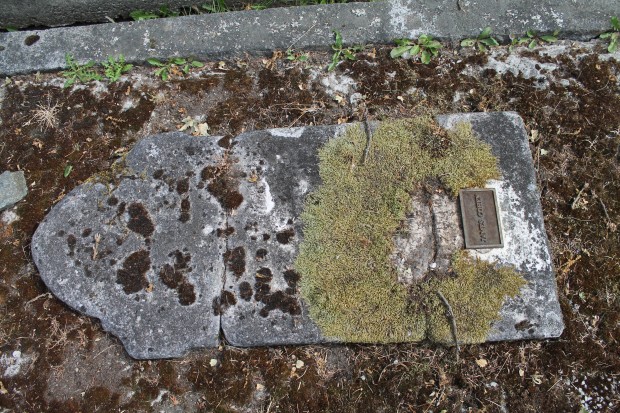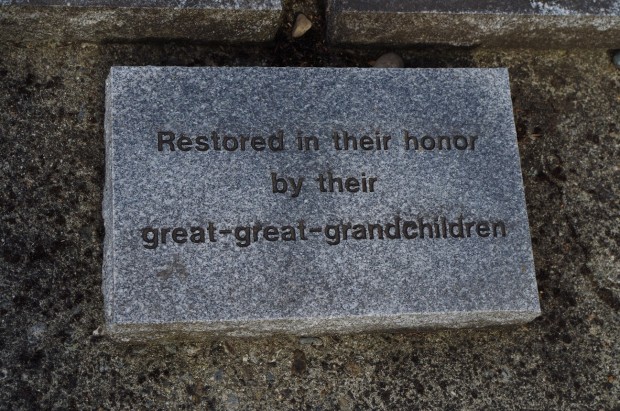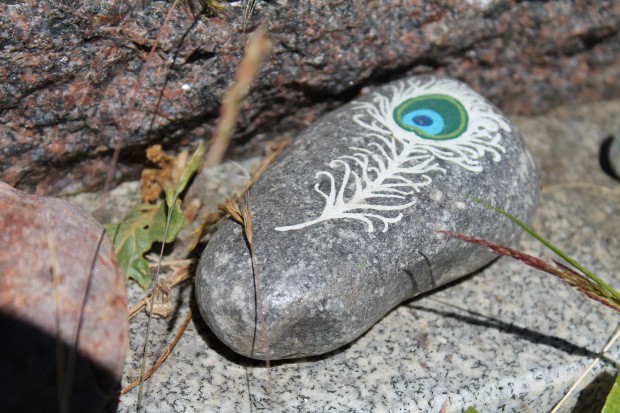I often found myself to be the first to arrive at the Emanu-el cemetery during our field school sessions. There are no walls that separate this space from the busy city streets outside yet I found it strangely quiet within the cemetery. I knew no one buried there but over time I felt connected to many of the individuals on the monuments. Finding myself alone in the early mornings I would wander with my music silently playing as I observed all the monuments and any inscriptions that may remain. My heart felt heavy every time I approached a monument that had been eroded, broken or the inscription faded. I felt as though this individual had been forgotten but then I would see a small stone deliberately placed on or around the monument; a silent message to the deceased that they have not been forgotten. From a simple stone to elaborately painted rocks these messages were everywhere to remind me why we are doing what we are doing. Their monuments may be fading or breaking but the memories of the individuals are not. These tiny stones reminded me that people still remember and respect those buried here and I wanted to help keep these identities and memories strong.
To me, our field school started off as a way to develop field experience but as time went on I noticed that our perception on what we were doing changed dramatically. Experience was no longer our focus. This was no longer a class that simply filled up our school credits but instead was a way to give back to a community and to educate the public on why cemeteries are important and need to be protected. Even as the class finishes I hear people asking about volunteer opportunities in the future and how they are not ready to leave this cemetery or to leave its people.

A marble monument that has fallen and eroded. Moss and lichen threaten the stone by creating chemicals that eat away at the surface. Cracks fill with water and eventually widen or allow for plant growth which further damages the monument. To preserve the identity of the individual, a small plaque is placed near the base on the stone. Name of deceased: James Cohen.
When you look at something with a new eye every morning you see things you may have missed the day before. You look at lichen and plant growth differently as they slowly eat away or break the stone. Inscriptions that were once thoughtfully cut into the monument are slowly fading because of rainfall, pollution and even human contact with the stone. You want to do everything you can to make these monuments safe but with the constant threat of water damage, plants growth, and even human activity it becomes overwhelming unless you have a community of people willing to stand behind you. I can only hope through our field work and the future work to come that more people will be inspired to become educated and to learn how they can help protect the memories of those within cemeteries by understanding the dangers these monuments face every day.

A granite stone placed below four plots that have had their identities restored by the individuals’ great-great-grandchildren. Although the individuals’ names have been restored, the original marble monuments are still at threat of eroding and decaying. This is proof that those buried within the cemetery are still closely linked to the communities in Victoria.

